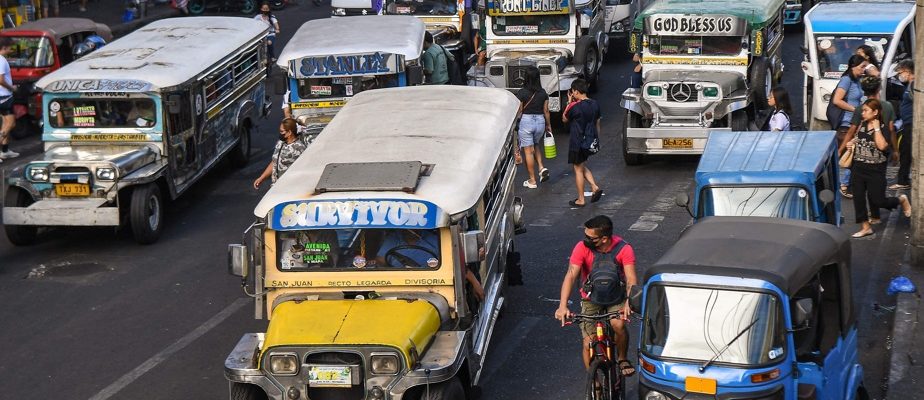(Manila) Noisy smoke-spitters with flamboyant decor, the jeepneys, these customized Jeeps that have become part of Filipino folklore, are reaching the end of their journey, in competition with more modern minibuses.
Originally made from automobiles abandoned by the U.S. military at the end of World War II, they have served as public transportation – among other things – for decades in the Philippines, sporting bright colors and ornaments in chromium.
Easy to repair and inexpensive for passengers, these ever more imposing and original metal monsters have become a national symbol. Which doesn’t stop Manila from wanting to get rid of it.
The government unveiled an exit plan in 2017, with the ambition of deploying a fleet of more modern minibuses to replace jeepneys, popular but also polluting, not always comfortable or very safe.
The announcement was a blow to the head for Leonard Sarao, operations manager at Sarao Motors, a historic jeepney dealership.
The family business based in the capital Manila enjoyed its peak in the 1970s and 1980s, producing between 50 and 60 jeepneys per month.
Demand eventually slowed in the decades that followed, with the emergence of new means of transportation. In 2014, Sarao Motors manufactured barely ten jeepneys per month.

PHOTO TED ALJIBE, AGENCE FRANCE-PRESSE
Leonard Sarao
And today, only one every four to six months, according to Mr. Sarao, 31 years old.
“We have customers who have been coming back since the 1950s, they bought jeepneys to expand their fleet,” he says.
However, “since this new (government) program there are doubts, even fears” of not being able to use a new vehicle long enough, he notes.
Sarao Motors is well capable of meeting government environmental and safety standards, but that translates into jeepneys that are “three to four times more expensive” than a traditional jeepney, Mr. Sarao says.
Operators have until April 30 to form cooperatives – which will have access to public funding – and gradually replace their vehicles.
The drivers are against it, arguing that buying new jeepneys would plunge them into debt and they would be unable to earn enough money to survive.
“It is difficult for us to have a modern jeepney […] we can’t afford it” financially, testifies Julio Dimaunahan, 57, explaining that he suffers from competition from motorcycles.
“Our worry is that we may not be able to pay our debts,” says Flocerfida Majadas, a 62-year-old operator, saying she is worried about her employees.
Trumpet horn
Among buses, vans and other types of transport, however, jeepneys continue to stand out in the Philippines.
Recognizable by their flashy bodywork and their trumpet-like horn, they only cost passengers 13 pesos (around 30 cents) and trips to the garage are less painful for owners.

PHOTO TED ALJIBE, AGENCE FRANCE-PRESSE
“As soon as a customer buys a jeepney from us, any mechanic in the provinces or in remote areas can repair it,” assures Mr. Sarao.
An advantage over the modern minibuses equipped with electric motors, wifi, cameras and air conditioning that the government would like to see on the streets?
“If they break down, where will we find the money to repair them? », worries Mr. Dimaunahan.
Leonard Sarao says he is concerned about the quality of imported minibuses, produced by foreign companies that he cannot compete with.
“The way we do things here is 100% by hand so we do quality control to make sure the panels don’t come loose and the welds are complete.”
“When you rush things, that’s when things can go wrong,” he warns.
Teodoro Caparino, a driver for 35 years, hopes that the government will choose to repair existing jeepneys rather than replacing them with “vehicles made in China”.

PHOTO TED ALJIBE, AGENCE FRANCE-PRESSE
Teodoro Caparino
“Our families will end up starving if we can no longer drive our jeepneys […] all we know how to do is drive,” laments the 60-year-old man.
And if there should be a replacement, Mr. Sarao at least wants the jeepney “spirit” to remain.
“It could be bigger, wider and longer, but as long as the essence or the spirit of the jeepney is still there, I think it will still be a jeepney,” he concludes.
